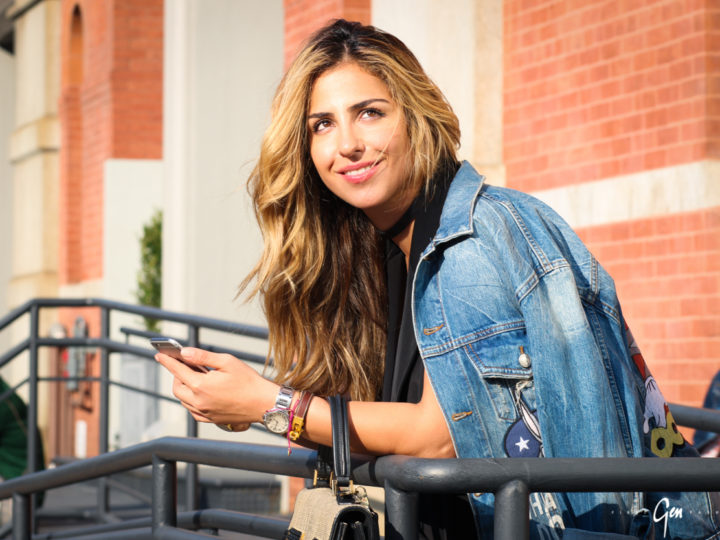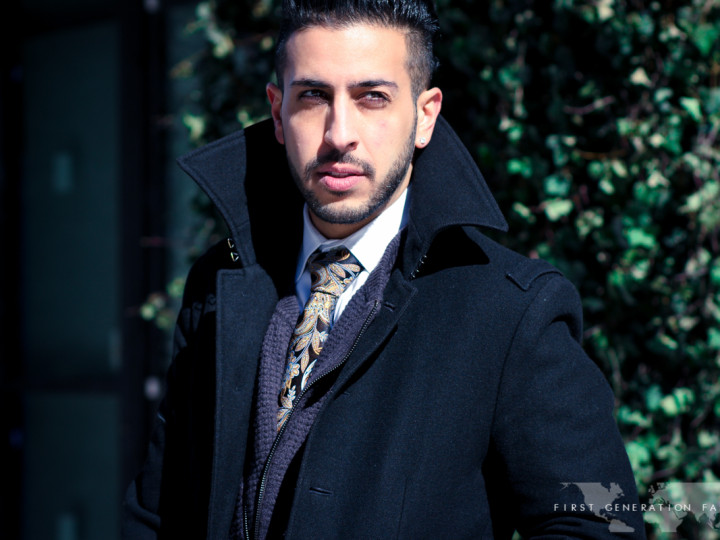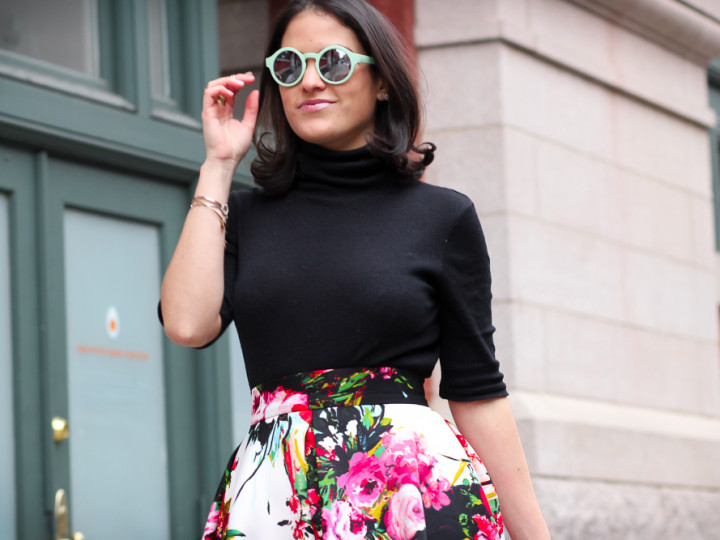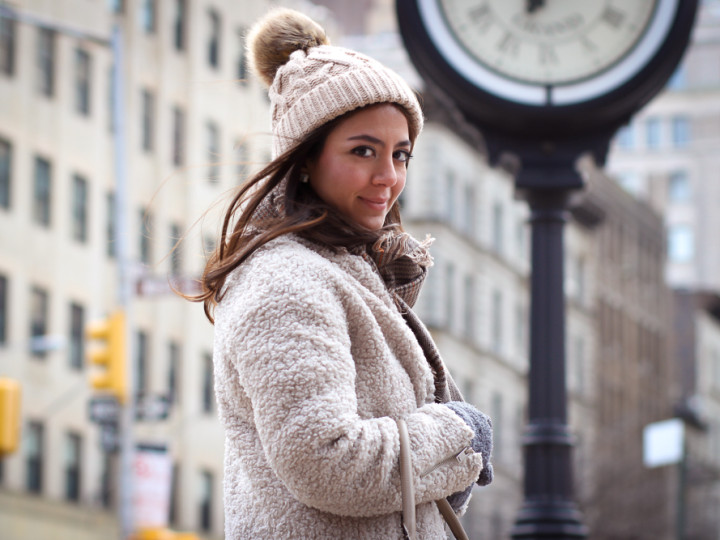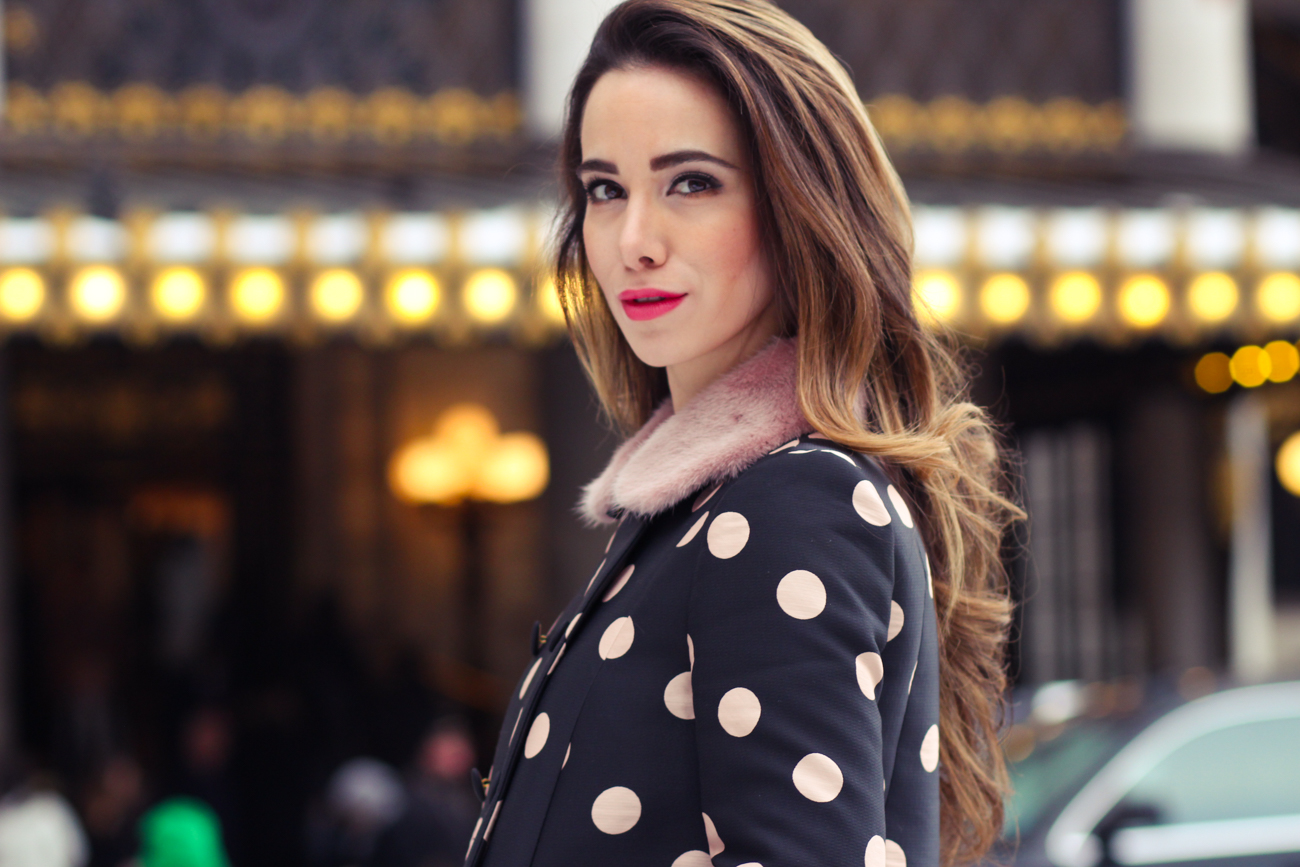
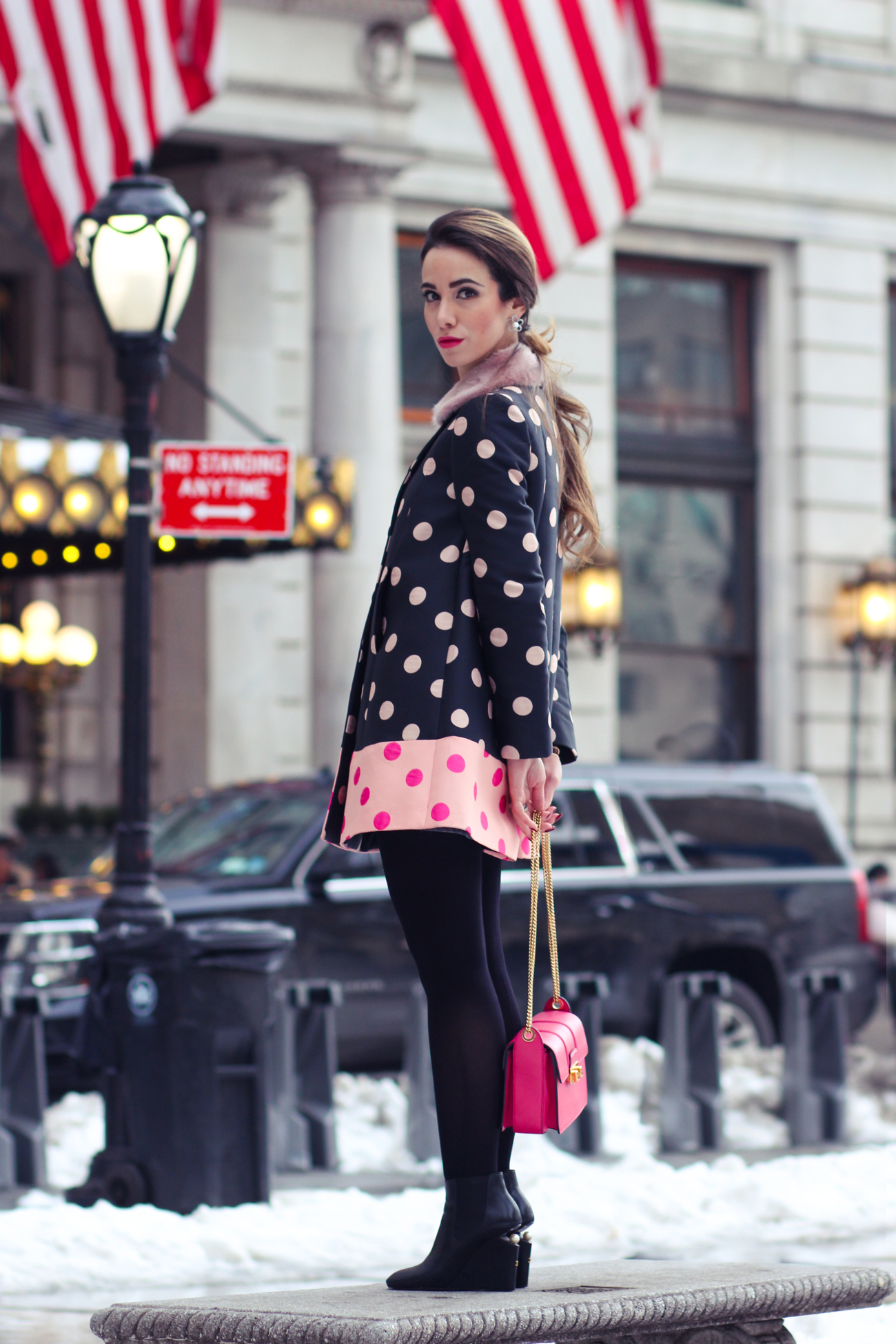
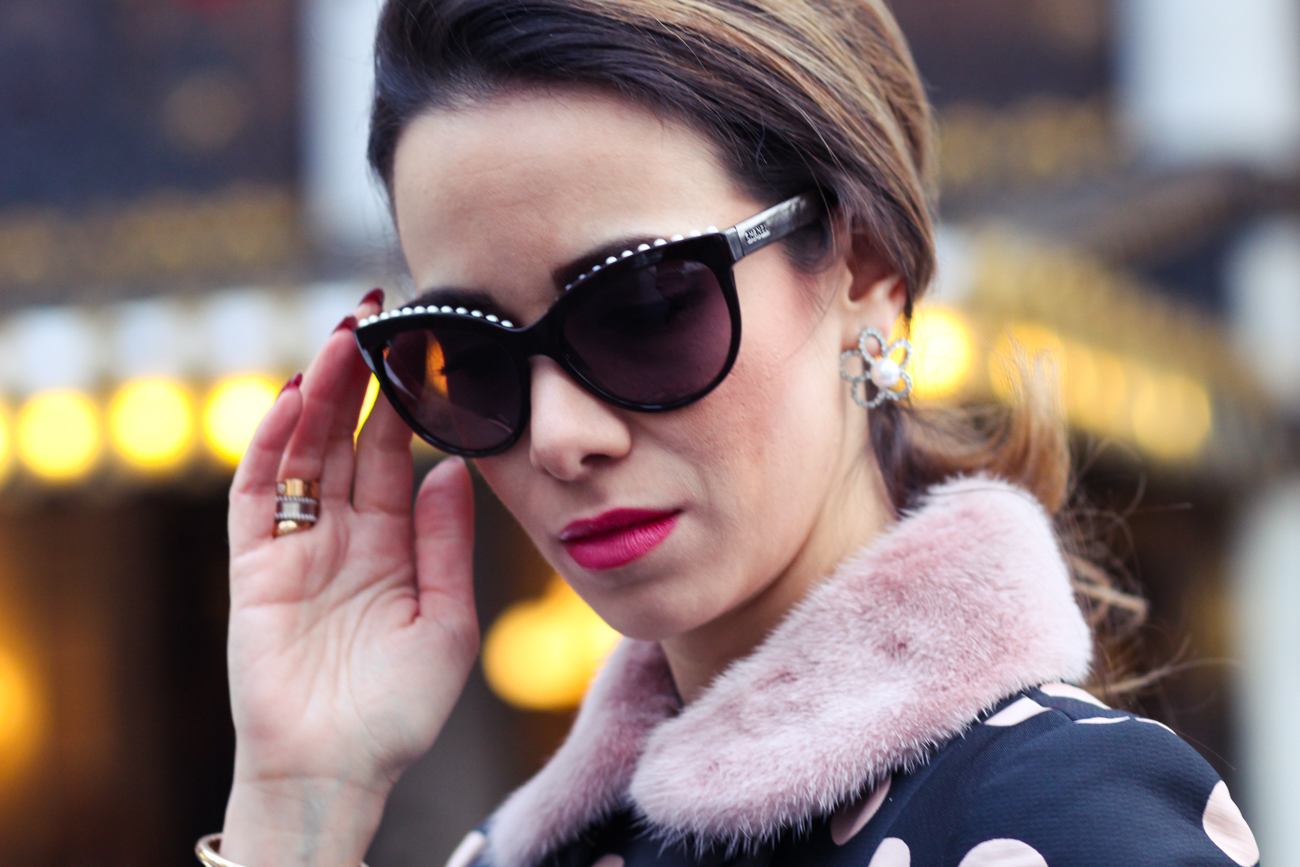
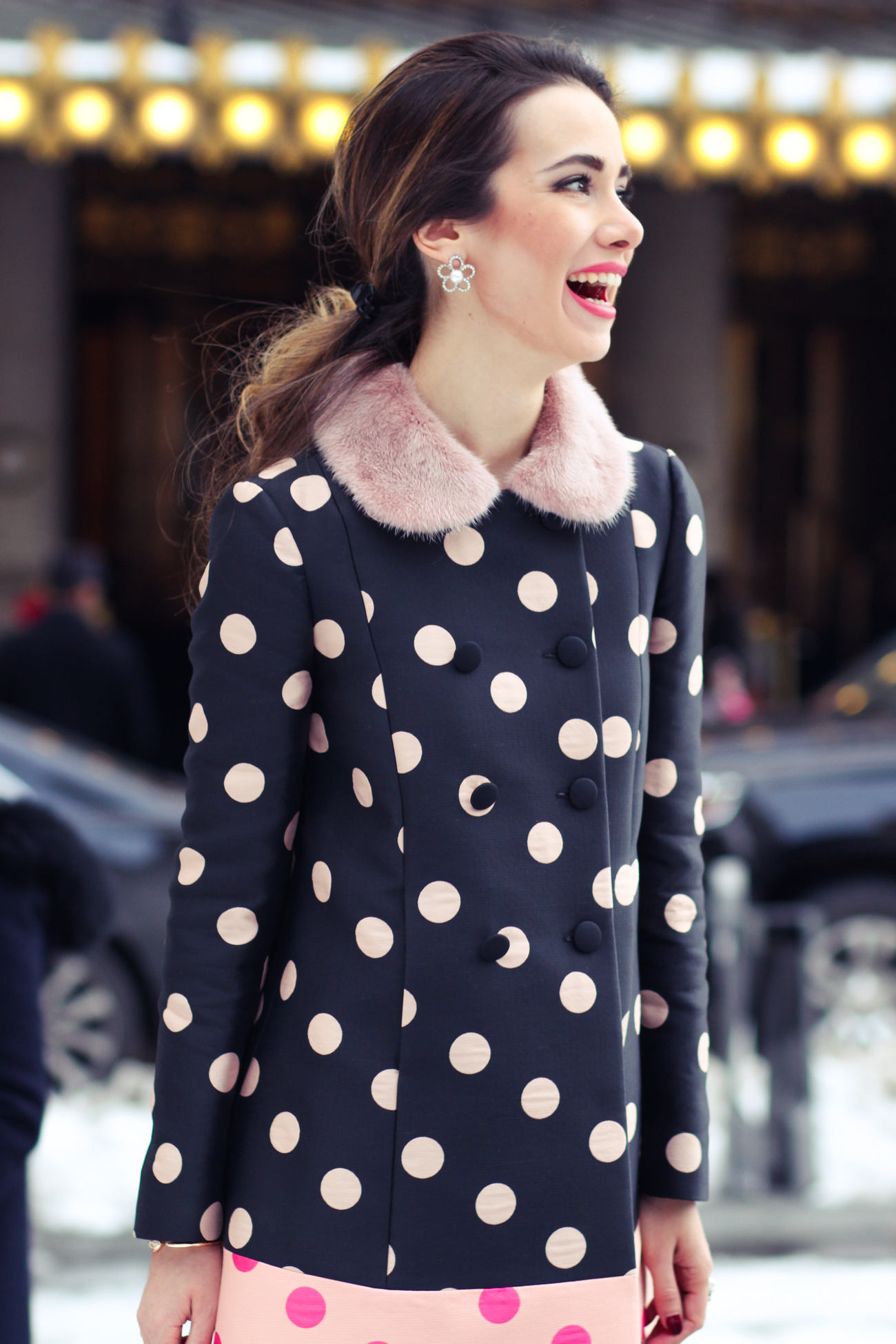
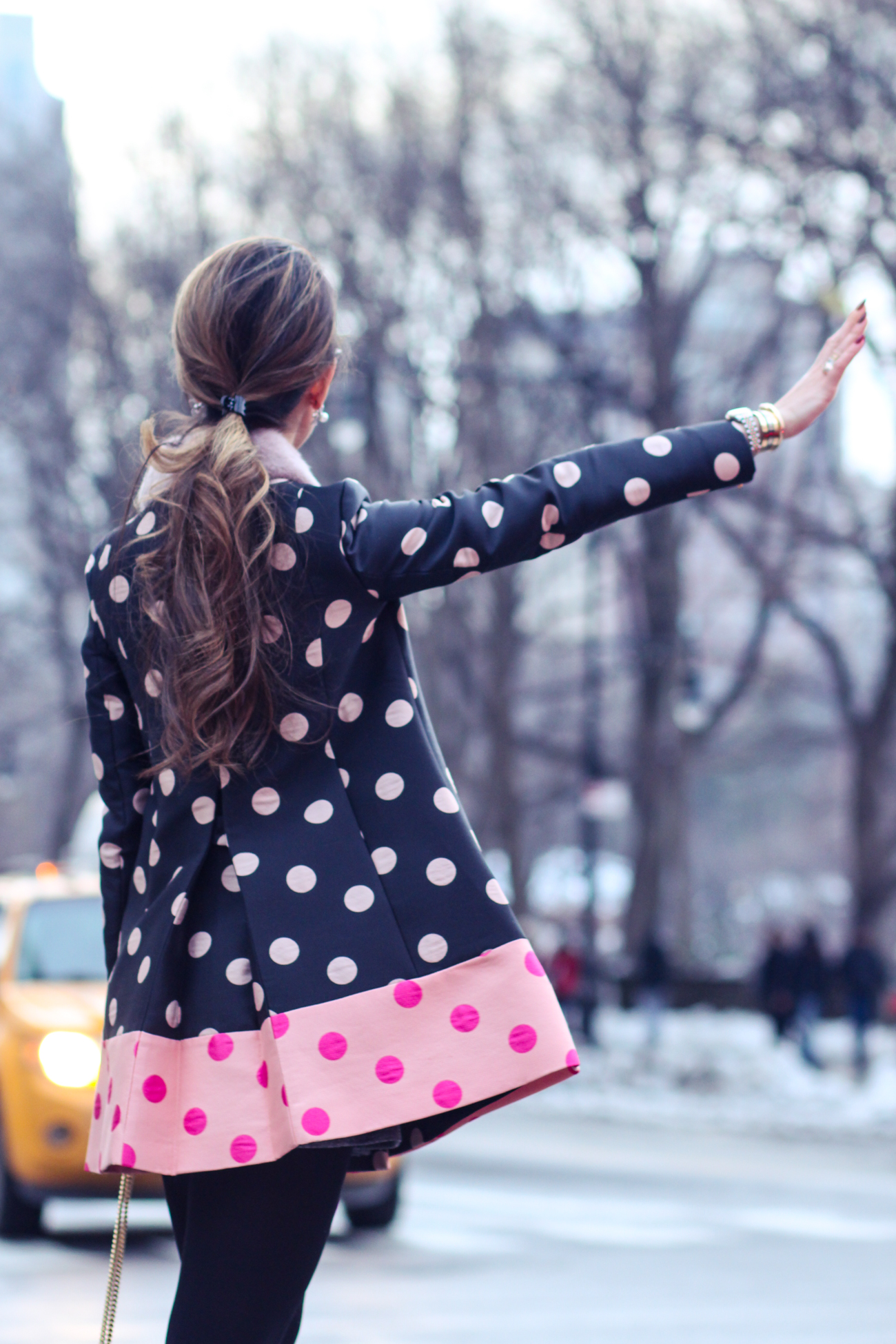
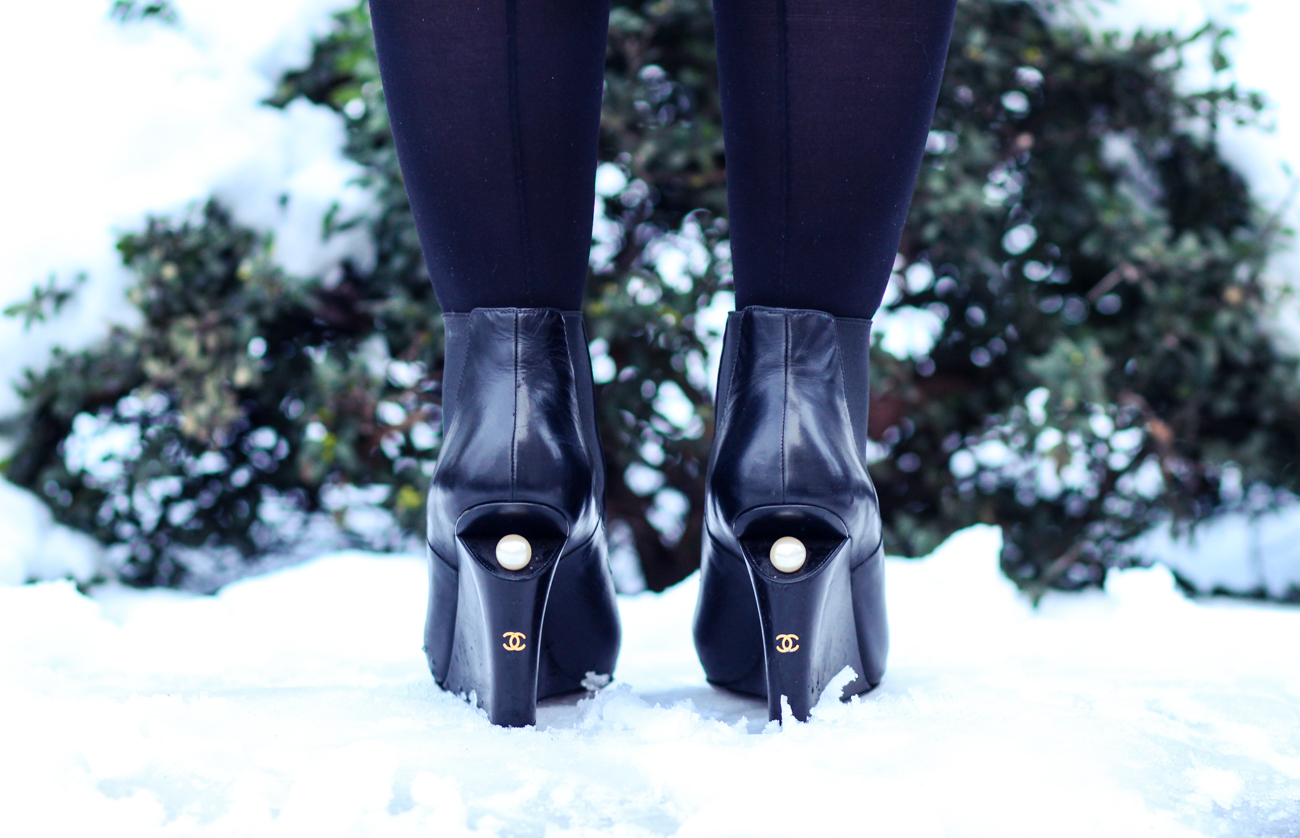
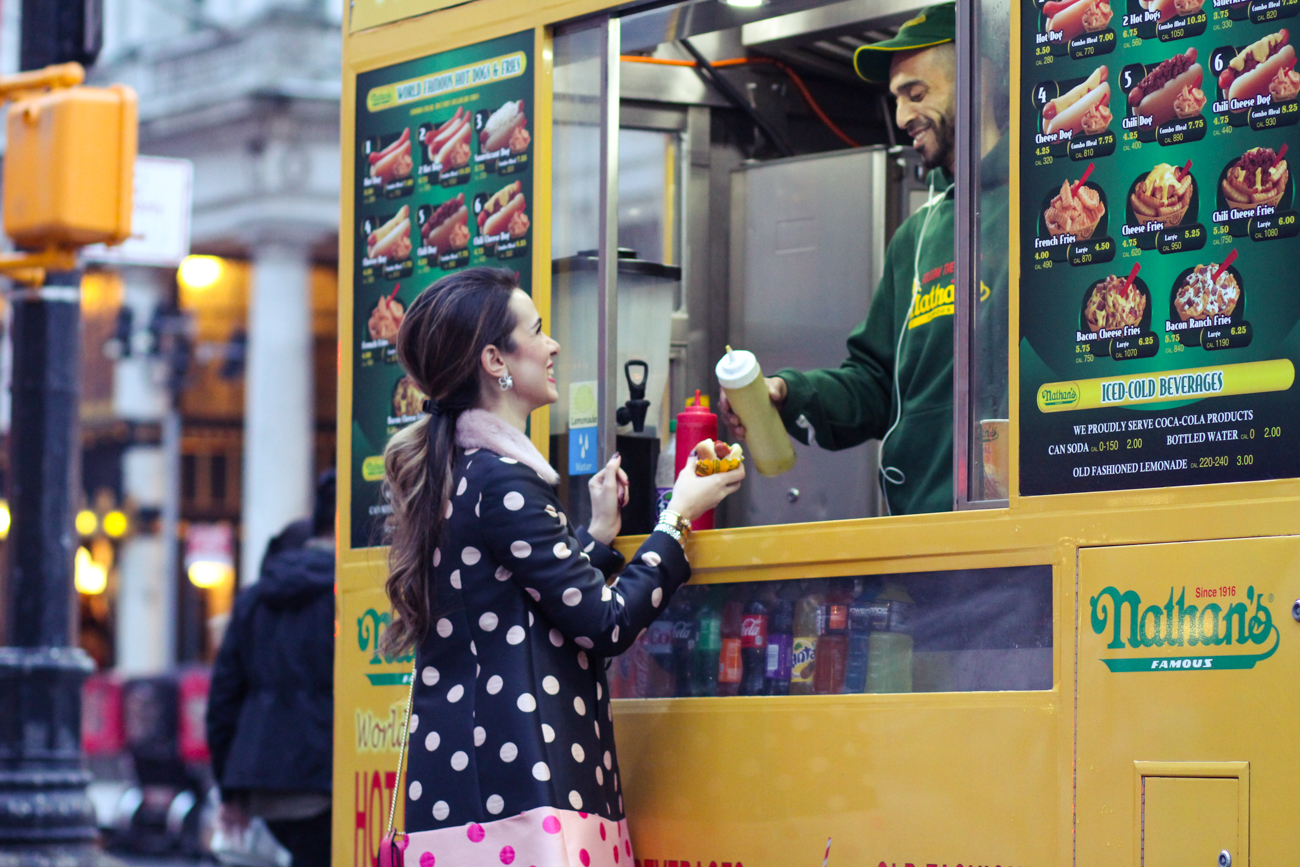
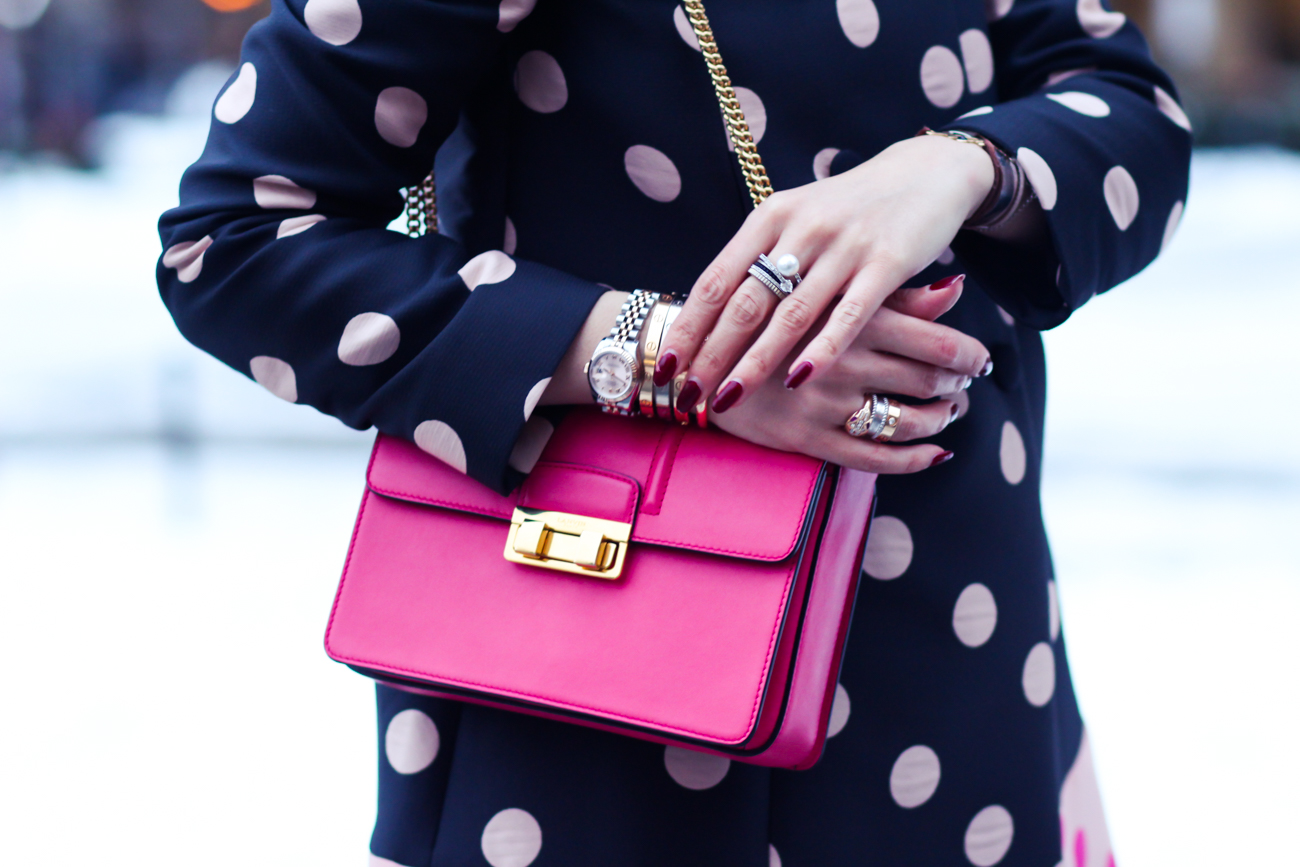
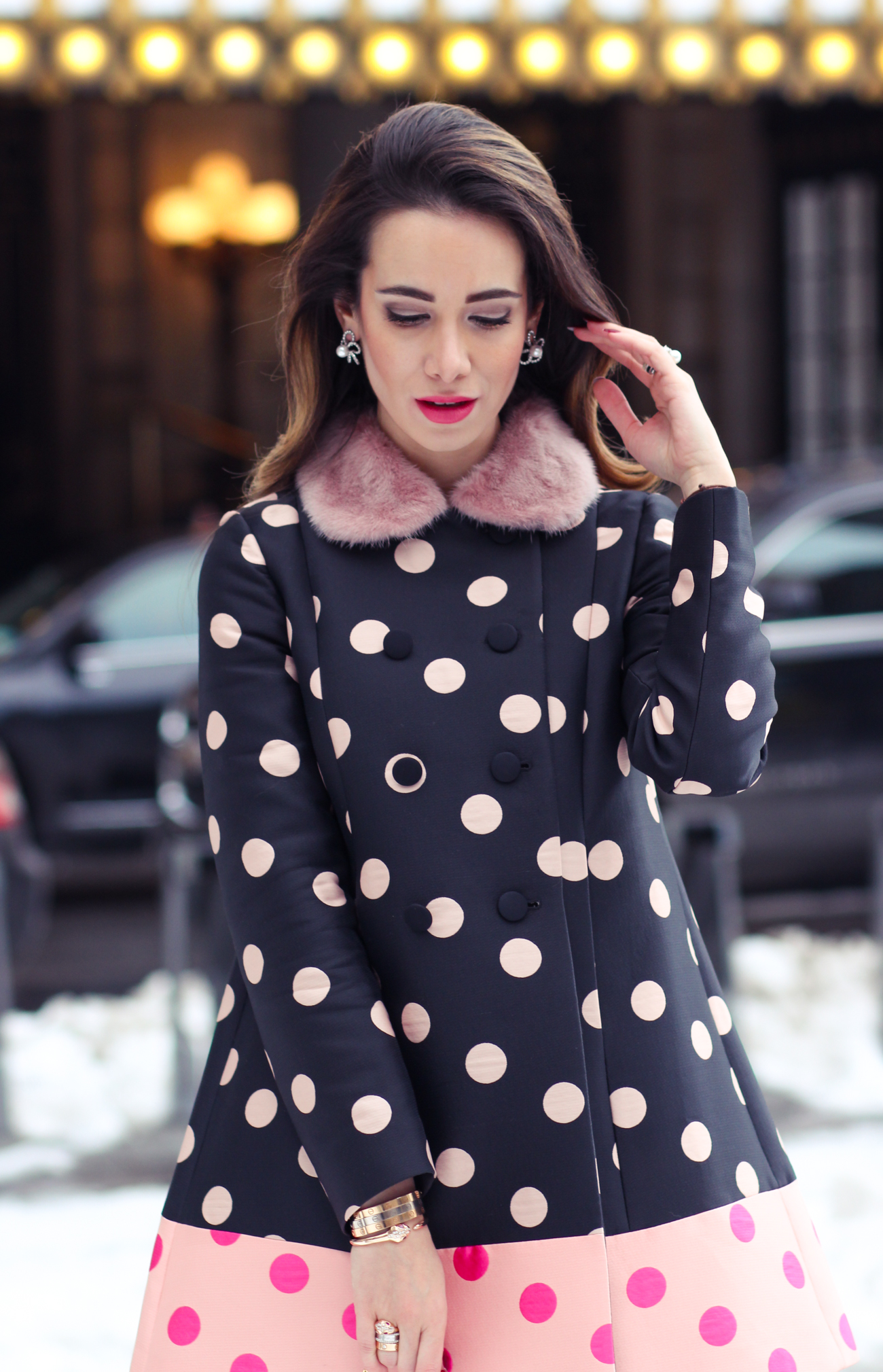
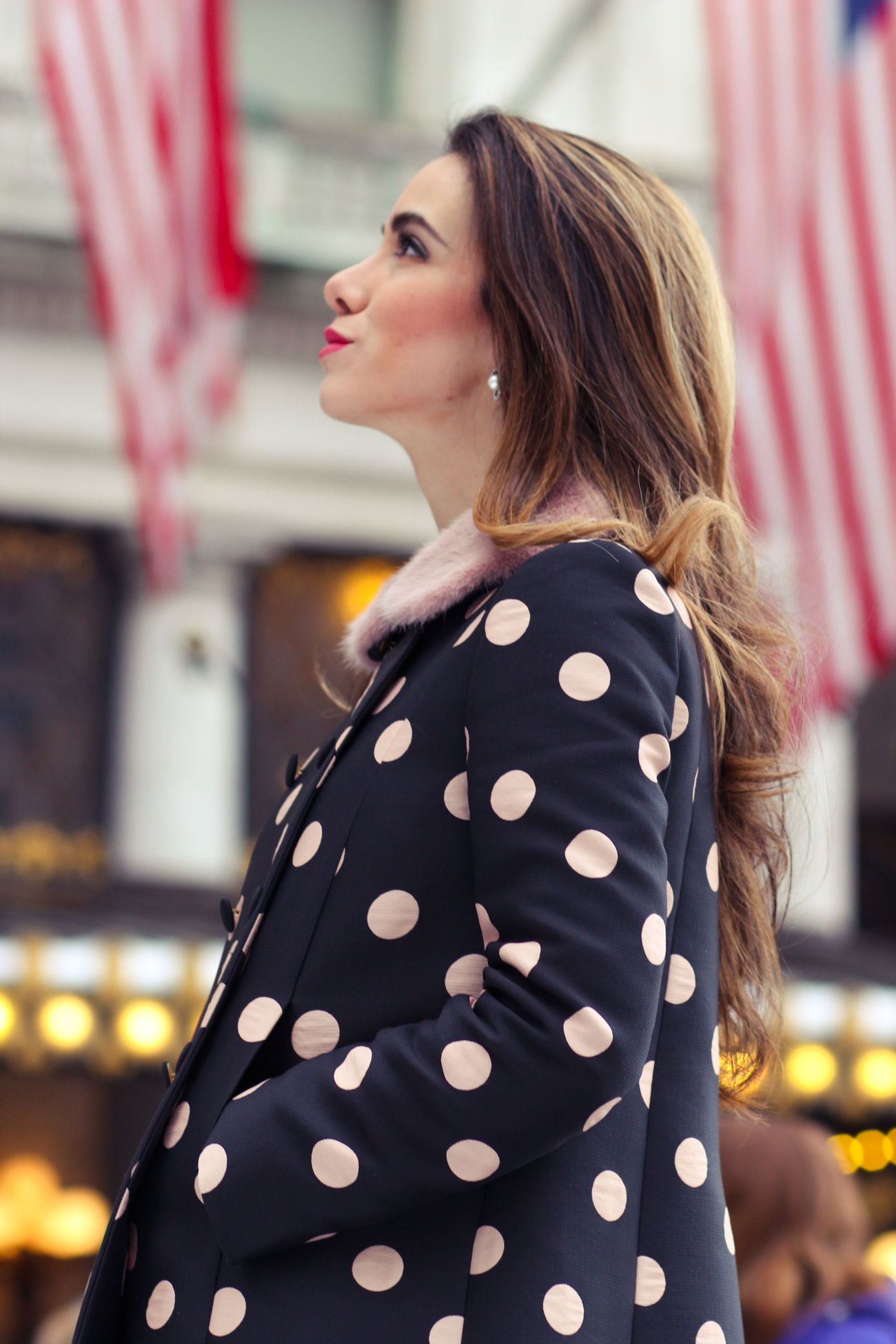
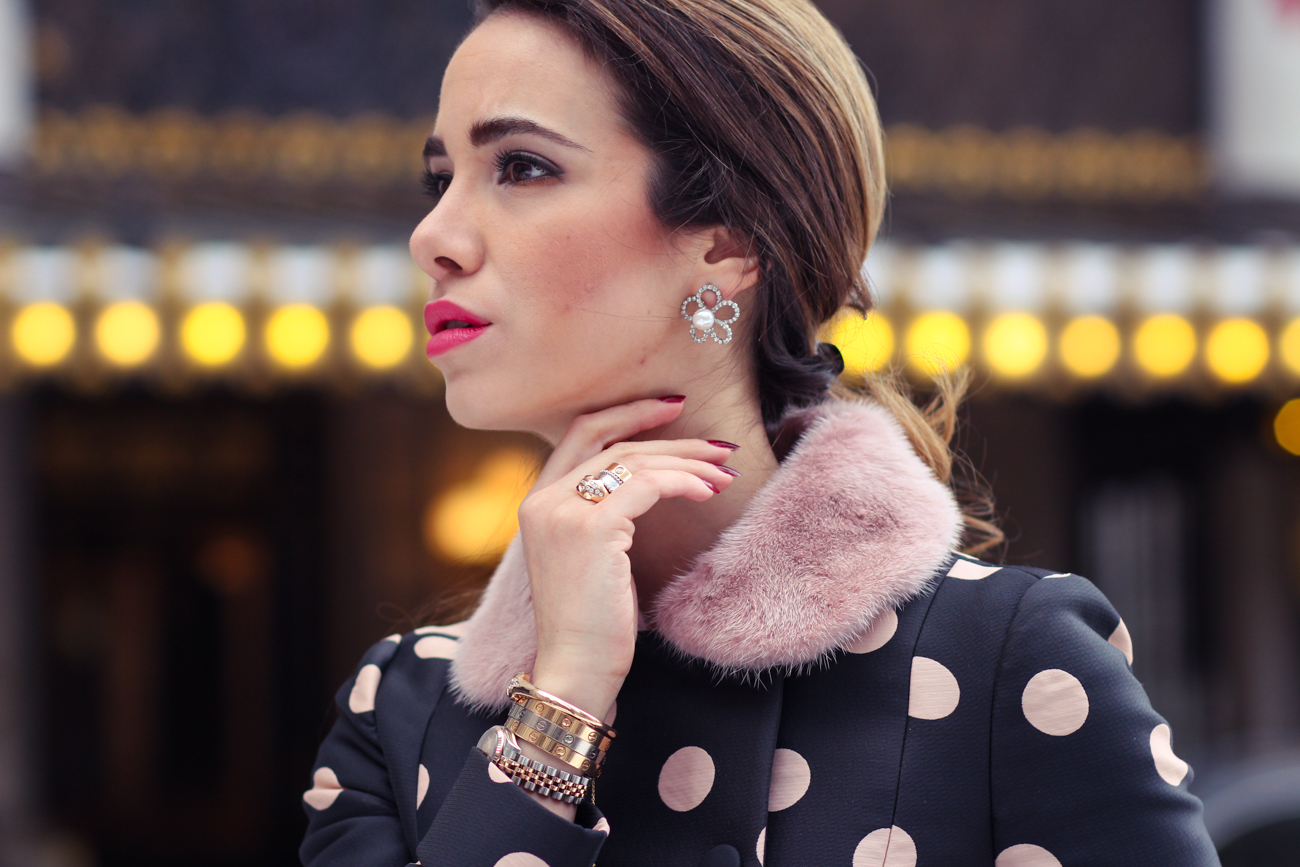
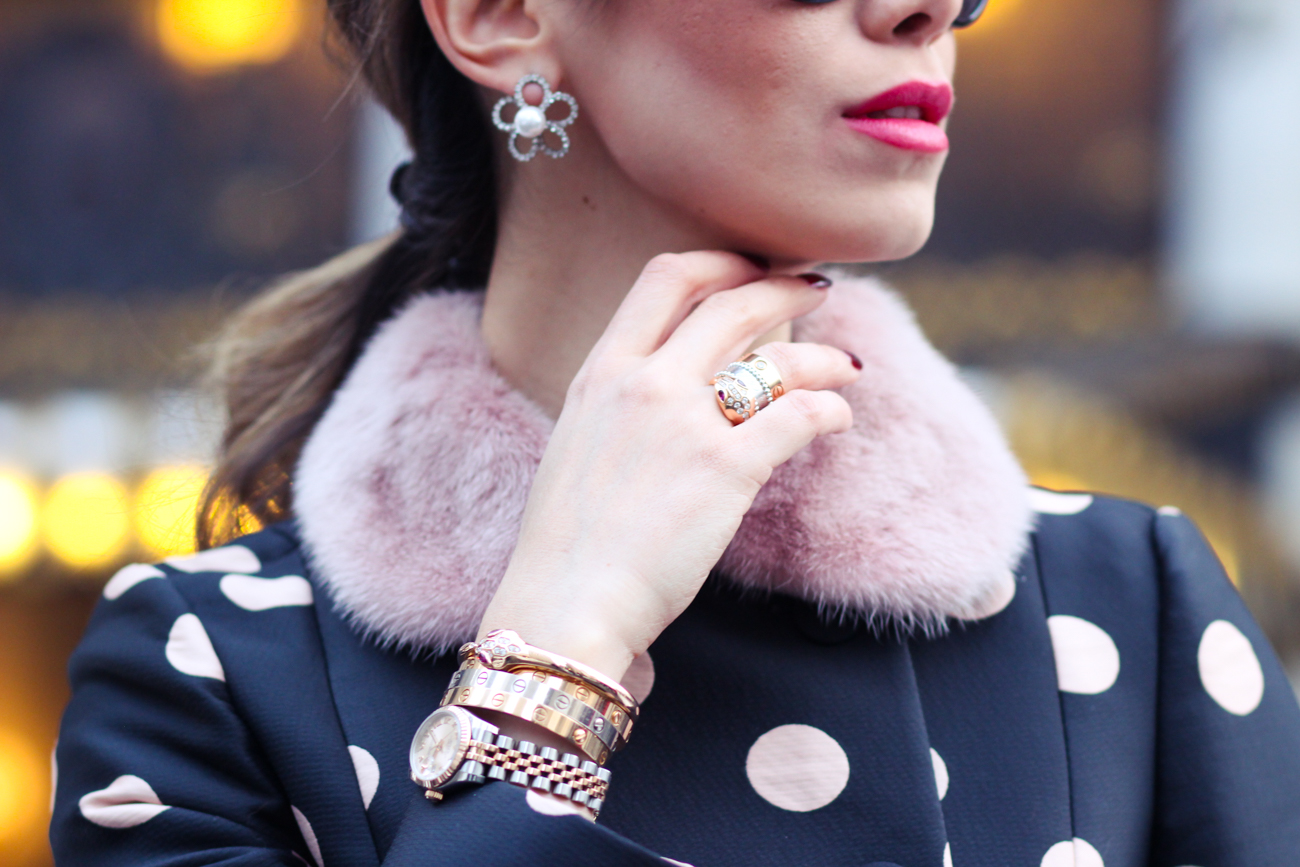
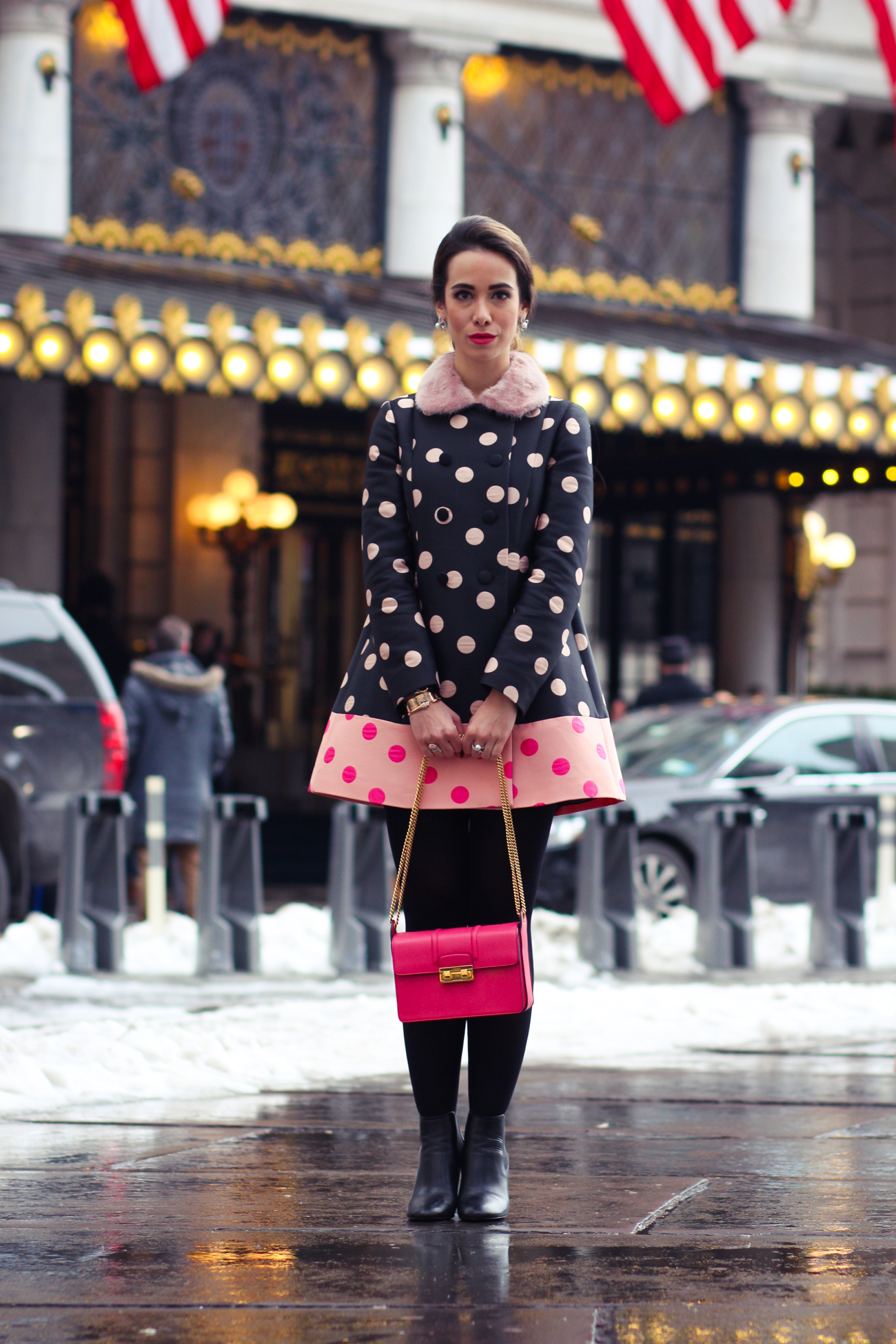
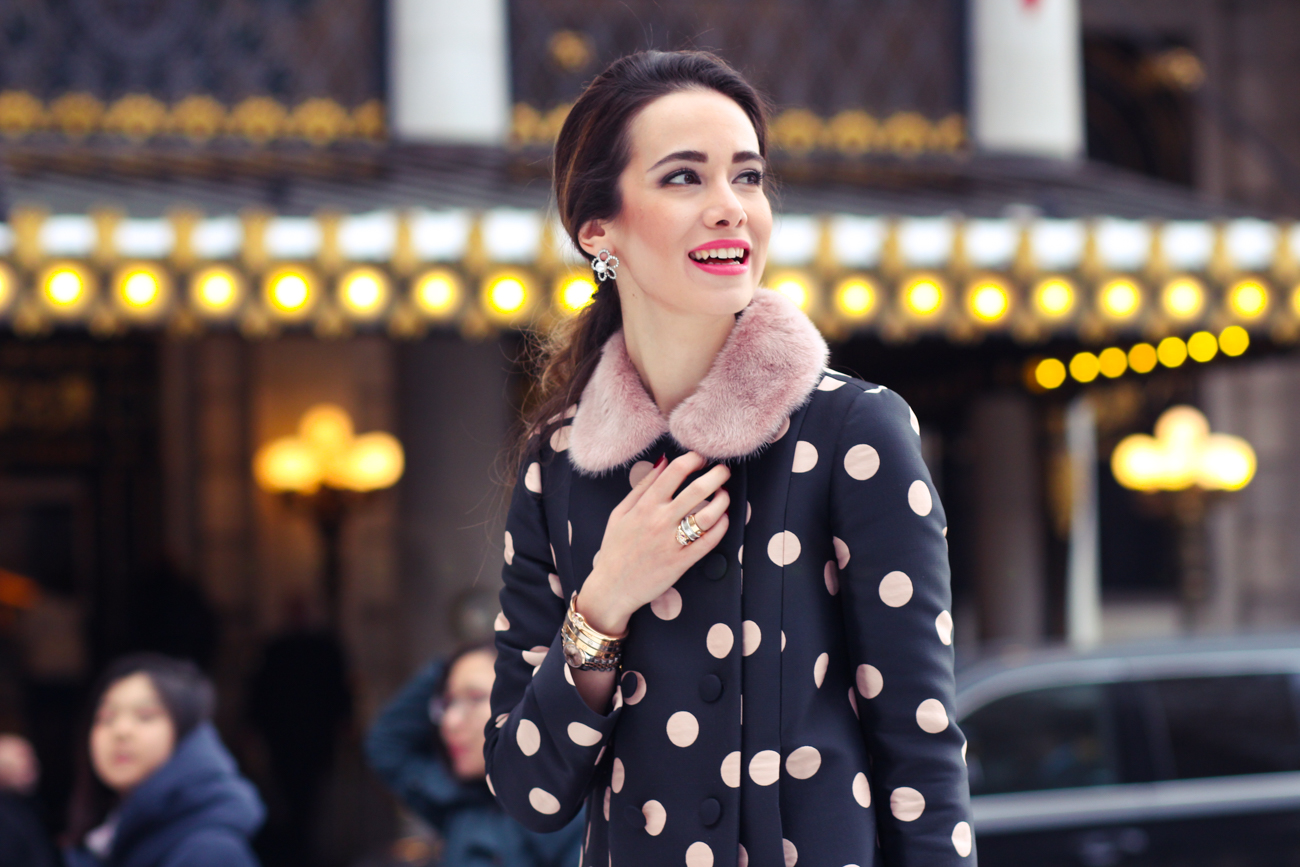
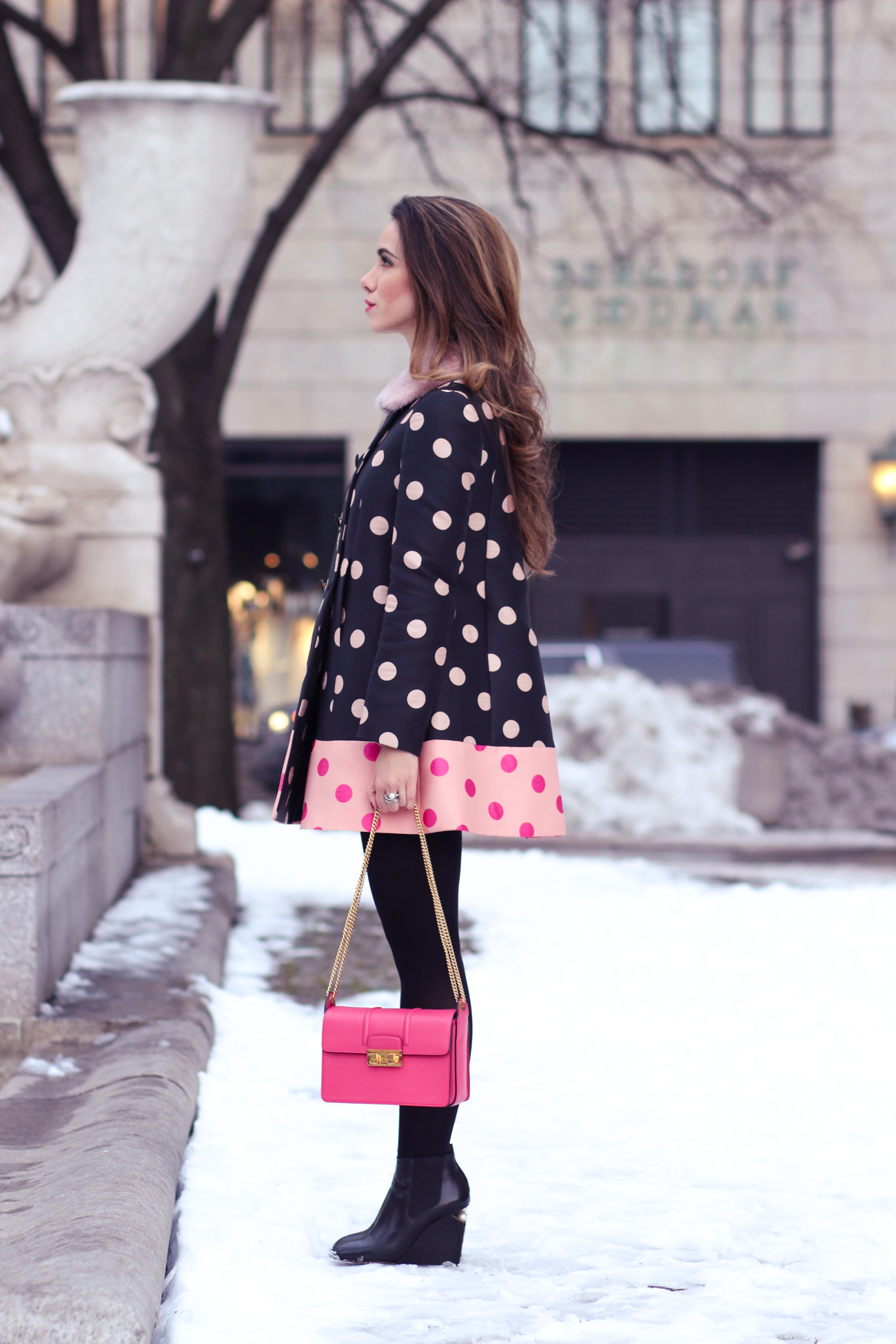
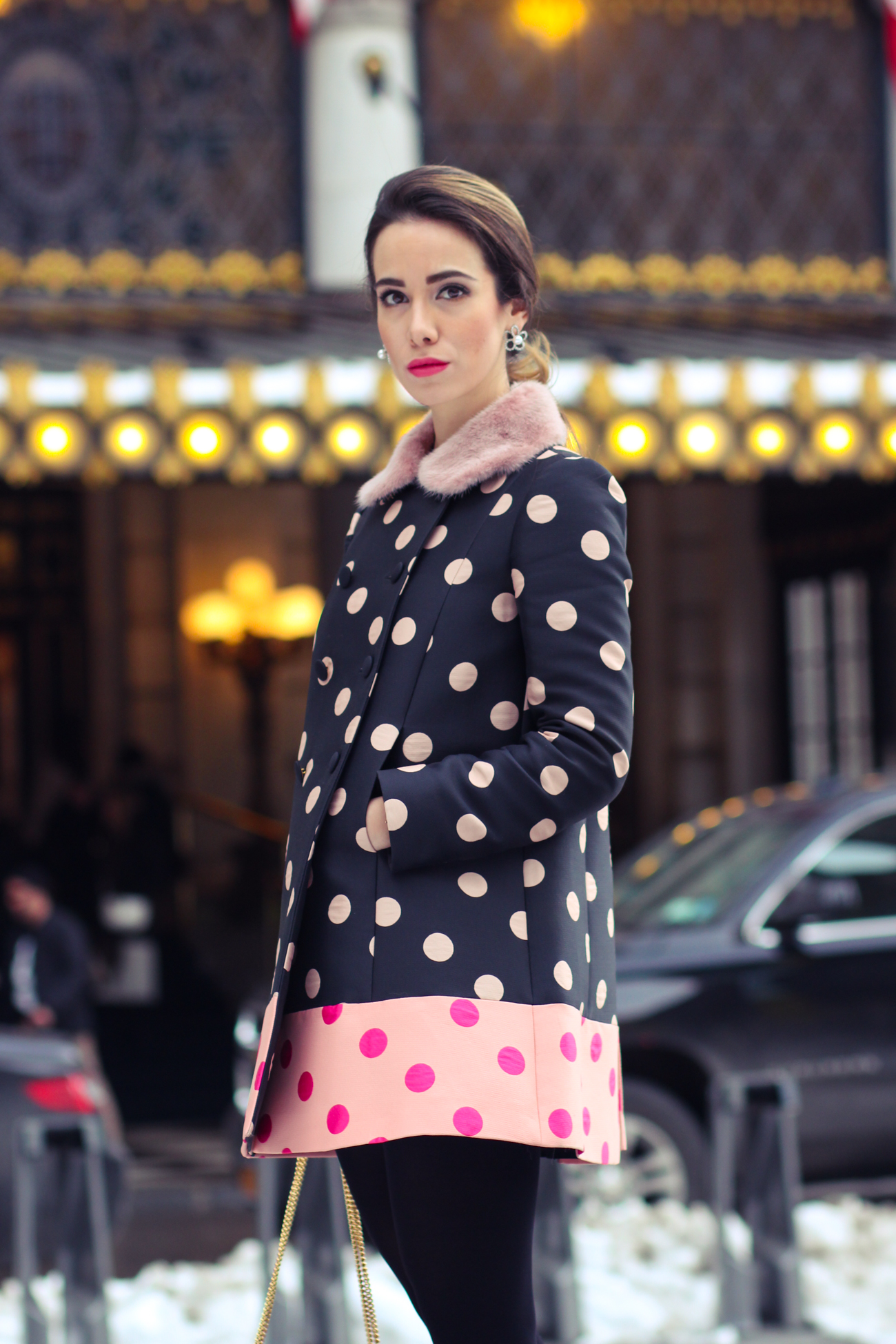
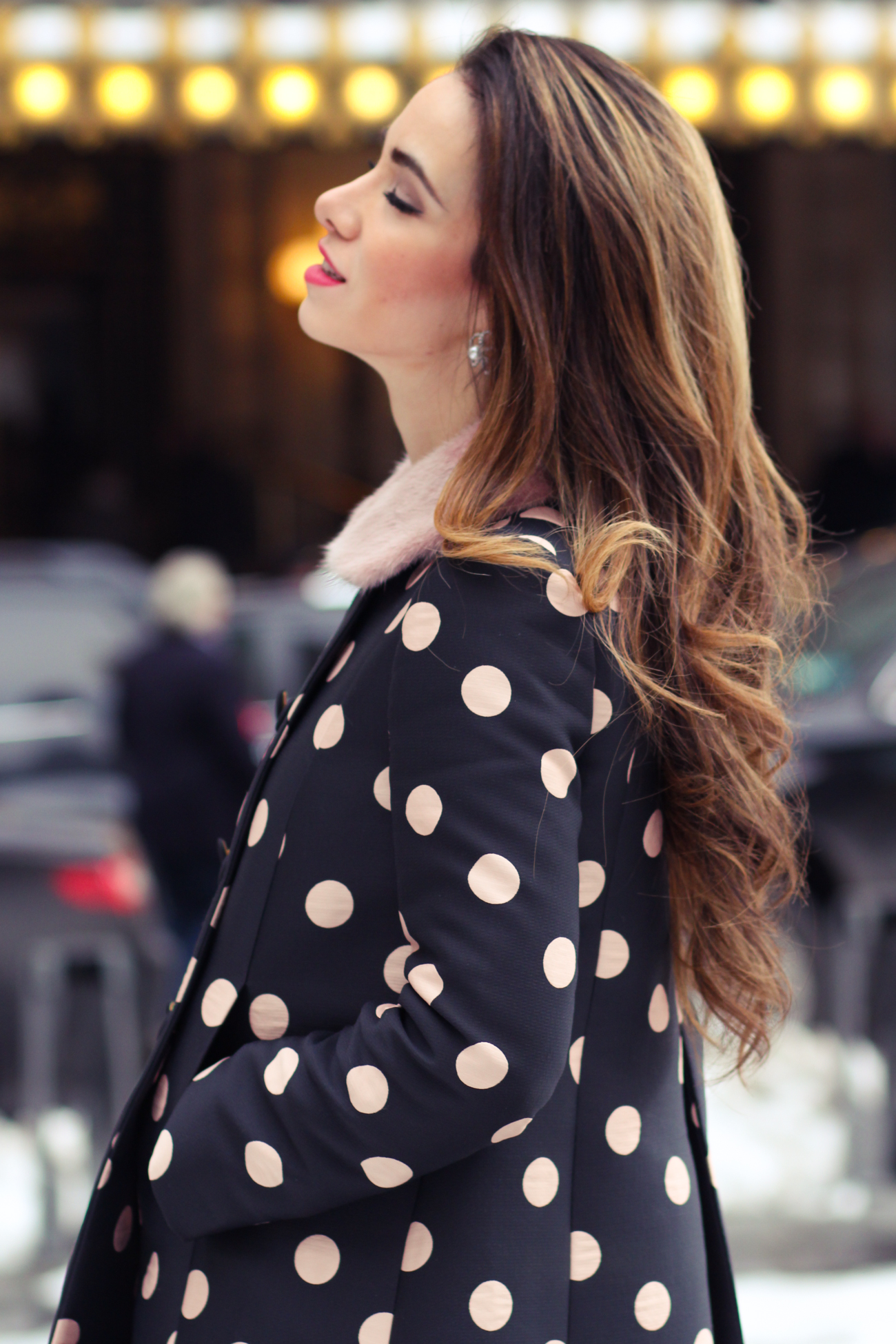
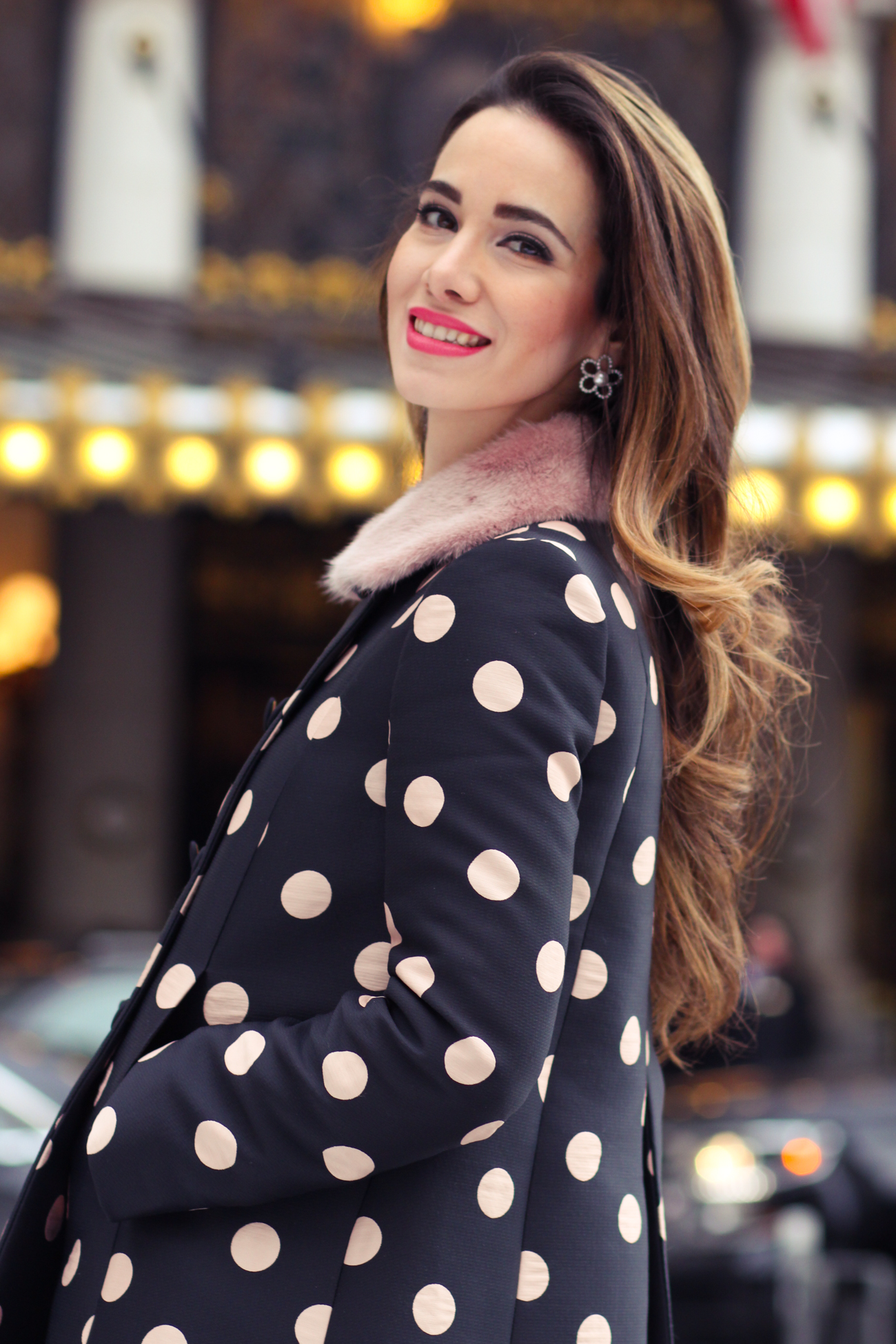
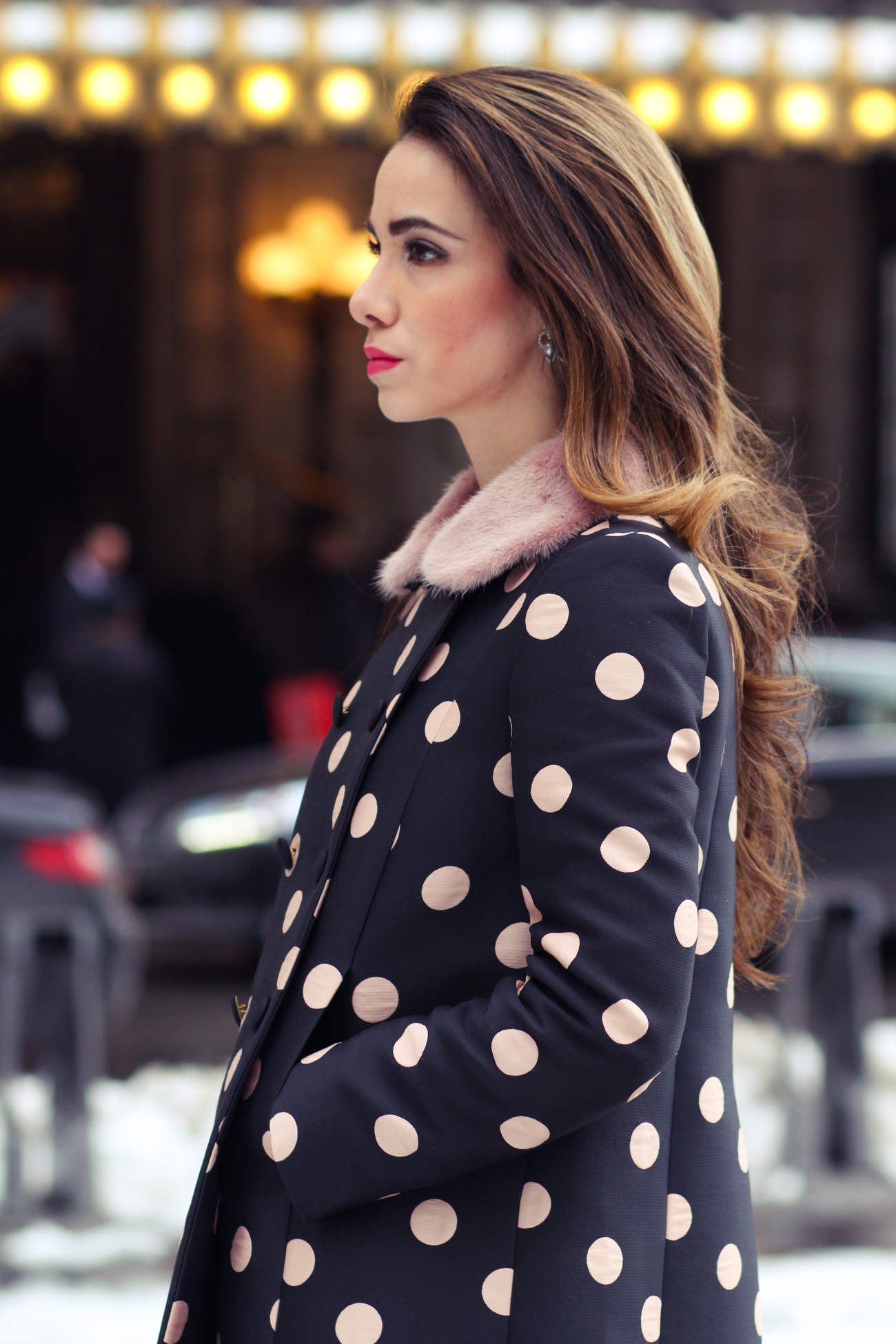
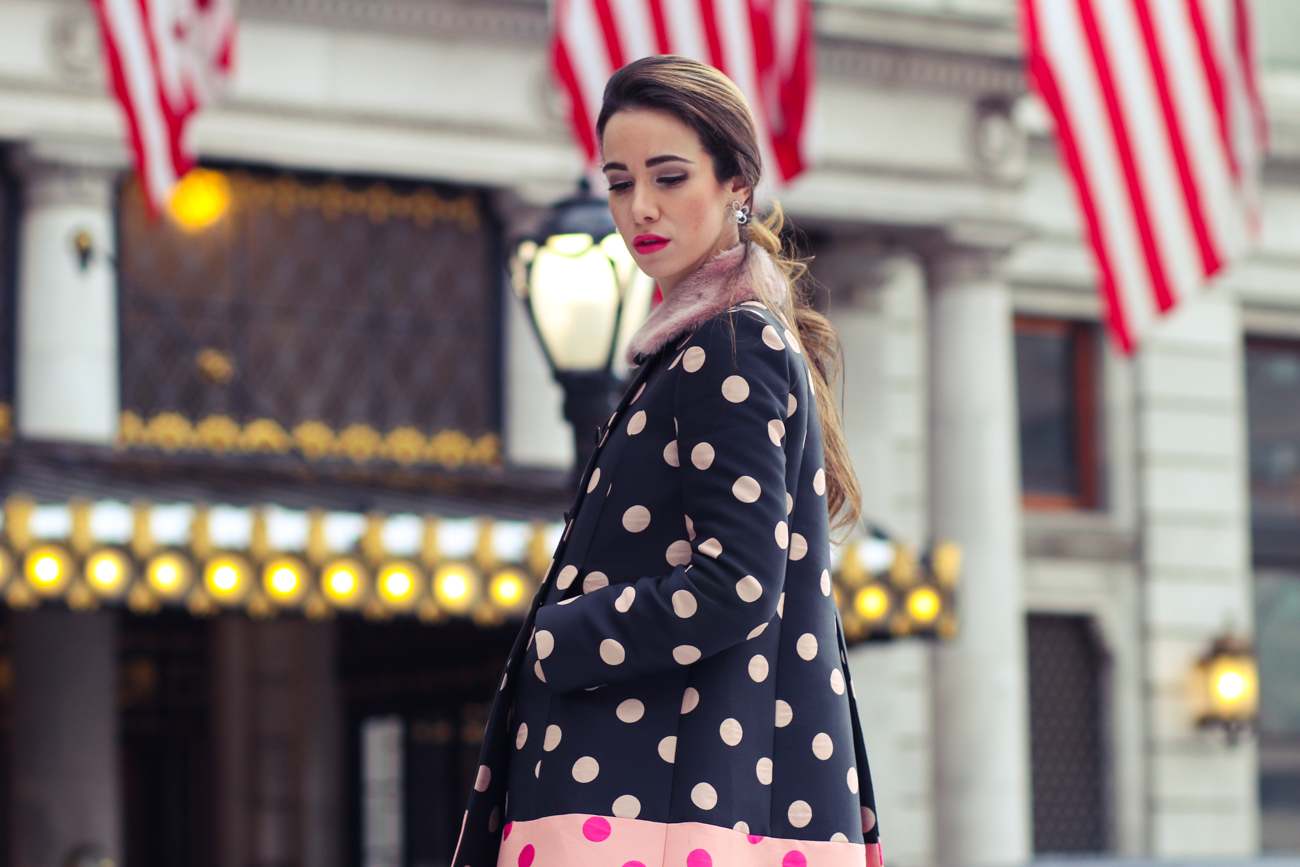
In today’s world where beauty and substance are often delineated as mutually exclusive, Tara will strike you as an anomaly. At first glance, she is perceived as poised and beautiful with a refined sense of style. But her true beauty lies within her courage as an investigative journalist and philanthropist in the Middle East. Tara celebrates her femininity without compromising her commitment to her mission of impacting the world. Through her foundation Art of Hope, Tara contributes to the overlooked and often forgotten refugees of war in the Middle East. Her ability to balance femininity and a career confronting the ugliest truths facing the international community solidify her position as a modern day role model.
Tell us about your background.
I grew up in Iran after the revolution. My parents were Iranian and American citizens and went to school in America in the late sixties. Then they moved back to Iran to start a life there. My father was very much in love with his country and always wanted to contribute to his people. I grew up in a very modern family; educated, secular, open-minded, and similar to kids in America.
What brought you back to the states?
A lot of kids in Iran move to the US, Canada or the U.K after high school for higher education. I have citizenship in both countries.
Tell us more about life in Iran. For many Americans, it is an unknown world.
Iran is a lot more westernized than people perceive it to be. Yes, we have a theocracy and yes, women have to wear a scarf to go out, but we have the choice. I am not forced to wear a black “chador” (the traditional religious outer-wear of conservative women in Iran). Closer to the revolution it was a lot more conservative but now it is very open. Women in Iran make up a large sum of university students and the work force. The youth in Iran and the people of Iran are the largest consumers of the Internet in the Middle East. They are westernized and much of what is available to us in the West is available to them inside the country.
What was life in Iran like after the revolution?
I don’t want to diminish the fact that there are a lot of socio-political issues, but it is not a country where we don’t have infrastructures or any sort of freedom. Unfortunately, there are a few countries that want Iran to be isolated and a small yet powerful percentage of conservative people inside Iran want to country to live in isolation. But out of the almost 80 million people in Iran, the majority of the population want to be apart of the international community. People in Iran have so much more in common with people in the States than what we hear in the media. They have respect for self and others, joie de vivre, and love and understanding of each other.
How can we get the American people and the western world to see the real and present-day Iran?
The only way to get an Americans to view foreigners with understanding is to have them connect with people from those backgrounds. Then the barrier comes down.
As a New Yorker, living in a melting pot, I am very familiar with the Iran you speak of. Unfortunately, the majority of Americans don’t have this understanding of your country. Where do you think the lack of knowledge stems from?
Unfortunately, the relationship between Iran and the US has been politicized since the 1979 Islamic revolution. There are no diplomatic relations, or people-to-people exchanges in a consistent way. Iran doesn’t have an embassy here, and we don’t have a US embassy in Iran. There is no way for Iranian people and Americans to engage with each other in a sustainable and tangible way.
When I moved to the US to finish high school and go to college, I realized that American kids were the same as kids in Iran. I grew up watching Gone with the Wind, A Street Car Named Desire, and Breakfast at Tiffany’s (yes I was into the Classics) and listened to boy bands and watched Friends. My idea of America was a very romanticized world to live in. I was super Americanized; but not many of my American friends had any idea of the vibrant community that exists in Iran.
“People are what make up a country; not its government. Governments come and go. Values, culture, and the people of that country are what make up a nation.”
How has this experience inspired your work today?
I wanted to bridge cultures and bridge the barriers between people. Back in 2015, when I was working with Al Jazeera America, I got to cover the nuclear negotiations from Iran. There, I got to do a piece called “The Perception of Iran”. I remember asking a very conservative-looking woman, “what do you think of America?” Under her all black Chador she responded: “we respect American people. In fact, I think that American people and Iranian people have a lot in common. What we say about America refers to the politics and the foreign policy of America.”
People are what make up a country; not its government. Governments come and go. Values, culture, and the people of that country are what make up a nation. You and I are not our government. You and I are very different than Donald Trump or any single President or Secretary of State. America is its people. America is not its government. People are what make up a country—they are its heartbeat. That’s valid in America and it’s valid in Iran. My mission and my passion has always been to tell the stories of these people in an effort to bridge cultures and barriers.
You pursued journalism because there was something missing in media?
I wanted to be a storyteller. I want to tell stories that shape, impact, and influence people. I want to tell stories from the vantage point of the people that are being affected.
You also worked in the nation’s largest news networks. Tell us about your experiences there.
One of the things I’ve learnt in the US from is that often-times the speed of capitalism is so fast that it takes away from depth. Everything is so fast here that we don’t often take a moment to appreciate values, perceptions, depth of the matter, and why we truly should care about a story.
I studied journalism in grad school at USC, and had my first job at NBC-LA with one of the best investigative journalists in the world, Frank Snepp. I was so humbled by him and felt lucky to work with someone that cares about the depth of the matter. He understood depth and the value of “story-telling”. After two years of being with Frank, I moved to D.C. and joined the cable news world—a world that in many ways was different than the values that drew me to journalism to begin with.
You are ostensibly feminine, poised and beautiful – you possess qualities that make you great for TV. Did they embrace that side of you?
No. I moved to D.C. and I thought that if I worked hard and kept my head down I would be recognized. But I realized that a lot of people would take advantage of that. I was working at a level where very few Iranian Americans had been able to work in. But being a young women looking a certain way didn’t help me. It’s not my fault that I look this way or that I embrace beauty and like to wear pink lipstick! At the same time I have awards that are rare for my age, a master’s degree, and have reported from conflict zones that very few executives have been to.
It was sadly funny, they couldn’t figure me out; they hated that I walked wearing heels and would break news out of the Middle East overnight. But in long-term all that was a lesson that people don’t always perceive you they way you want to be perceived; you just have to learn to stay authentic and true to self.
Did you notice anything surprising about network news that more Americans should know about?
Each network pushes certain narratives and I always wanted to stay objective and balanced. There are a lot of good people working in the news business but in general cable news is evaluated on ratings. In every newscast they think about stories that are catchy and grab headlines and audiences. I want to tell stories that have impact. Being in an environment to tell stories with high ratings, that are sexy and can get clicks—that wasn’t the deriving force behind why I became a journalist.
Tell us why you chose to report in the Middle East.
Journalism is a public service. As a journalist you have the privilege of being the voice to the voiceless and seeing things from the vantage point of those affected by the issues at hand. I grew up in a country that missed that and I saw it as a responsibility to use my journalism know-how in that part of the world.
Media has a power that unfortunately is taken for granted by many. For example, today, we don’t see too many humanized stories coming out of Syria and the storyline has blurred in mainstream American media—but is the war over? Are the children dying less? No. Stories should not just be about ratings and number, stories are people, and I always felt close to the people of the Middle East and thought I can tell their stories to our American audiences.
What changed for you after leaving a major American news broadcaster?
I was writing and freelancing in the Middle East before moving to New York, to join Al Jazeera America. There, I was able to do more in-depth stories and continued my work on covering the Middle East and in particular the crisis in Syria and Iraq.
How was it covering the Syrian crisis? Was that scary for you? Did you feel that any moment a missile could hit exactly where you were standing?
I covered the Syrian crisis, from Turkey, Lebanon, Jordan, and the Syrian border regions. You can not cover a story without being there, without spending time with the people affected by the conditions you’re trying to report on, and without seeing and breathing the air they’re living in. It was my responsibility to be brave.
How do you find the courage to enter a war zone for your work?
It’s a responsibility. When you go in, even as a reporter, you don’t go in blindly. You do your research and you have your contacts and your sources. You go in for a story in a way that you have allies that will protect you. I had a mission.
This goes back to why I became a journalist. I could have stayed in LA and been a very fabulous, pretty, local news anchor. Trust me, my life would have been great. I grew up having opportunities that I’m humbled by; and I see a lot of people (Iranian, American, Syrian, Jordanian, French) that have not had such opportunities; but that doesn’t’ mean they deserve less—their voices need to be heard as well. I always wanted to use my platform to have an impact on making it better for others. .
Where does your gratitude for your own blessings in life stem from?
I lost my dad five years ago. He was the most important person in my life. After I lost him I realized I had so much to be grateful for and that I can’t take any of that for granted. I took journalism so seriously because I believed in the power it has in shaping narratives.
In what ways are theses stories making an impact on Americans, Middle Easterners, and the international community?
Lack of education brings fear; but education empowers—education connects. The more we tell stories of these people with accuracy and fairness to those who have never heard their stories, the more we’re empowering and educating the world. That is my mission.
“Instead of feeling sorry for them and feeling ashamed for the opportunities that I have, I realized that I should channel that anger and weaponize it.”
Tell us about the non-proft you founded, Art of Hope. Do you remember the moment it dawned on you to that you could make the initiative to take further action with your work?
Yes, I remember in 2014, I was in Lebanon where I was doing a story about the Iraqi refugees who escaped Mosul. I met a family with three little girls who escaped ISIS. Their father told me that they now live in fear and they never leave their room; they were all held at gun-point by ISIS and the girls think that if they leave this home they will be captured by them Their home was incredibly small. Hearing their story, I started tearing up. My colleague, who had more experience than me, told me to stop. She said, “don’t feel sorry for them and don’t pity them. They are people, and you are too. Capture their story.”
I remember when I got back to my hotel I started sobbing. It was such profound moment, where I deeply realized that the only difference between those little girls and me was that I was born in a different country. That human empathy became a focal point of my coverage into this day.
Instead of feeling sorry for them and feeling ashamed for the opportunities that I have, I realized that I should channel that anger and weaponize it to tell their story. I continued to cover stories on the refugees to bring their challenges to the forefront. As a reporter I became stronger, and I never allowed my emotions to weaken me as a storyteller. Since then, I have developed empathy and anger and used both towards an impact-driven action to help those people. I then launched Art of Hope in August of 2016.
What issues does Art of Hope address?
One of the biggest problems I noticed through covering the Syrian crisis is the lack of attention that’s given given to trauma, emotional issues and PTSD among the refugee population. I have covered terrorism, national security, and foreign policy. I feel that there is a lot of attention on terrorism but so little about some of the root-causes that lead people to Jihad.
Unfortunately in this country, we’re now calling it “radical Islam”. It has nothing to with Islam, Christianity, or Judaism. It’s about how ideology changes people and gears them towards a mission that is not necessarily positive. I decided to start Art of Hope to directly work on helping children, teenagers, and adults cope with their PTSD, aggression, and trauma in an effort to prevent them from moving toward negative narratives. Refugees do not leave their country by choice. Refugees are forced to leave to their homes. There are 5 million refugees all across the Middle East and for many of them living conditions are incredibly inhumane.
How does Art of Hope make a difference?
With Art of Hope I team up with local NGO’s, (small, local, grass roots organizations) in Lebanon to create educational and vocational programming that will not only address trauma and psychological issues/psychosocial therapy but will also give them a craft , and an educational training of sort. They don’t have access to school and they don’t have access to therapy. We want to build a place for these people to get both.When did you realize that starting a foundation to combat extremism was a priority for you?
When did you realize that starting a foundation to combat PTSD, trauma, and ultimately extremism was a priority for you?
I once did a story on what goes on in the mind of terrorists. I also got to spend time with two incredible social workers that were doing counter-extremism work. A lot of these extremists who were detained had horrific stories of abuse, neglect, and oppression. Recruiters from extremists groups came to them and filled their voids by promises of hope, belonging, better financials, and of course women.
Imagine if you are a 12-year-old boy who is being abused and you don’t have any educational or economic opportunities. Or imagine you’re being neglected, abused, or disenfranchised. They would come to children like that and say, “are you hungry, let me give you food. Do you need money? Let me give you money. Are you angry? You know what, let’s take care of that. You go and fight those bad people who are the cause of your situation” Do you think that 12-year old has the comprehension to say, “wait a minute, are you by chance an extremist?” No. That child will look at that man as a hero and as someone who is giving him a sense of belonging, a sense of hope, and a sense of dignity.
This is something that is going on in that region vehemently, and we are missing it. We are missing the opportunity to nip the root causes of extremism from the bud. In large parts, extremism has to do with lack of opportunity, and a large component of it has to do with educational, sexual, family, and economic voids. These people are trying to fill their voids. The majority of refugee children are not in school. They are not getting formal education and they’re fleeing war. If they are treated poorly with no hope and prospect for a future, they are going to have their needs fulfilled by other people who may not necessarily have positive narratives to teach them.
How does making on impact on refugees affect people in US. Why do so many Americans feel detached or distant from this crisis?
People have become so used to human tragedy and too many people think that it has nothing to do with them. But it does have something to do with them! If we don’t address aggression, violence and extremism from the roots, we have a situation like what’s going on in Syria or Iraq, if we miss that, we then have people capable of carrying attacks like what we saw in Paris or Brussels—and the crisis only grows.
Understanding the root of why you’re doing something plays a large part of understanding what you’re doing. With the mention of counter-extremism I’m beginning to understand that there’s a much larger picture that you’re working to make an impact on.
I launched Art of Hope in August and we now have center in Lebanon. In the past few months, we managed to raise enough funds to open a center in one of the poorest slums in Lebanon where extremist recruitment takes place. The funny thing is, the costs are very little to make a large impact. Through Art of Hope, we are empowering the locals—including our social-workers who are trying to do good work in their own country and give them the resources to do their best for the refugees.
Why did you choose Lebanon as your location to launch Art of Hope for the Syrian refugees?
I chose Lebanon because they unfortunately have very poor infrastructure. They are a country of 4.5 million and they have 2 million refugees. 500,000 of the refugees are Palestinian and the rest are Syrians—although many of them are not registered and not accounted for.
Lebanon and Syria have had clashes and conflict in the past decades. Lebanon itself has a lot of social, economical, and educational challenges. It is a country with a small population that is coming out of a civil war. They are currently forced to handle a vulnerable population of refugees and unfortunately they simply can’t. All of what I’m doing is because I saw the crisis and it made me angry. I realized that storytelling is not enough and that we need to do something about it. Lebanon had the highest need and the international community is not doing enough.
How has New York played a role in your personal and professional journey? You are capable of balancing so much, does New York inspire you to do so?
I think New York is a cosmopolitan city where I feel diversity is being celebrated. Everyone has a purpose here, and there is no better city than New York to have a mission.
“Women empowerment is not just about the female, it’s about the society. Empowering women, is about empowering society.”
Can you speak on opportunity in New York as a female entrepreneur and philanthropist? How does it differ from opportunities for women in other societies?
In New York, I’m surrounded by people who got to where they are because of hard work. Men have to realize that if a woman is powerful, and they celebrate that power, it empowers them. Men have gone through life in such a way in history where they kept women back and on the sideline and empowered themselves to thrive. Very few men have realized that by empowering the woman, women will therefore empower them. Women’s empowerment is not just about the female, it’s about the society. Empowering women is about empowering society.
Are there any challenges that you face starting a non-profit as a woman?
Yes. I think starting a non-profit is challenging to begin with. Especially when you are working on issues that people in America don’t give care about. Young, beautiful women who are ambitious and passionate often times have to explain themselves a little bit more than men. I want to empower younger women to never be afraid to be ambitious and never feel that they have to explain themselves.
When people see me in New York City, I look a certain way. But when I’m in refugee camps I look very different. Looking this way should not take away from the value that I put into my work. You don’t have to look frumpy or unrefined to be doing something amazing. You can brush your hair, put a lipstick on, and care about the color of your purse while doing something empowering. With Art of Hope, we’re making an impact on people that need it the most. If at the end of the year I know that if I changed one person’s life, I’ve done something valuable; ultimately its about people we touch and people we have an impact on.
Your passion transcends you. Your message reminds me to keep working to make a difference, and that is the power of journalism. How do we get more people in the western world to care about the refugee crisis?
We have to make people understand that the issues that refugees face, are issues that you can also face very easily. The difference between them and you is that they were born in a different country. Those people did not choose to live that way — they were forced to. No human being should be left with the choice to stay and die, or leave their home and feel disenfranchised.
Click Here for more on Art of Hope
For more of Tara’s story subscribe to First Gen Fashion
SHOP THE LOOK //

